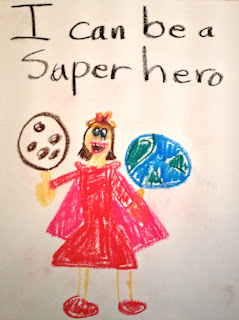Search This Blog
Monday, March 25, 2013
Milking the Music
Thursday, March 21, 2013
Teach Compassion or Risk Losing Our Humanity
Teach Compassion or Risk Losing Our Humanity
By Diana B. Thompson, and Betty Brittain, PhD
Following the Steubenville verdict, the victim’s mother said, "Human compassion is not taught by a teacher, a coach or a parent. It is a God-given gift instilled in all of us."
We are each born with a capacity for empathy, kindness and caring. Watch any group of three-year-olds, and you will see compassion is a skill that needs cultivating. Left un-nurtured, compassion gets bullied off the playground.
Whose job is it to teach compassion? Schools are geared towards academics. Teachers are inundated with the demands of standardized testing, safety, and security. Time for character development is limited. Sports are designed for competition. Coaches are prized more for winning than guiding. Celebrities and athlete role models often convey a "break the rules" attitude. Religion is taking a smaller role in positively influencing behavior.
Perhaps compassion is reinforced at home. According to the Kaiser Foundation, the average child age 8-18 spends 4.5 hours watching TV each day. The media might reflect a few touching moments, but character development through TV is limited at best. Let’s face it, Mister Rogers has been replaced by Sponge Bob.
Young people learn from experience and interaction with others. In a restaurant recently, I sat between two families. On one side, the adults engaged in conversation while the four-year-old watched cartoons on an iPad. A 6-year-old played games on a phone and never spoke. On the other side, sat a mother and her 9-year-old son. Mom was engaged with her iPad, while the boy spent dinner texting. They interacted only a few short minutes during the entire meal. Engaging in television and social media is an isolating experience. Given life’s demands and distractions, it’s easy to lose track of our children.
Steubenville is a wake up call for everyone. This is an important time to re-engage the young people in our lives to ensure they are developing a caring capacity. If you are a coach, parent, aunt, uncle, teacher, neighbor or friend, get involved. Ask, "if you saw someone abused, what would your role be?". Visit social media conversations. See what they are saying. Share stories of empathy and generosity. Celebrate them. Teaching comes through example. Be a kind and caring role model.
Teaching human compassion might be the missing link to prevent another Steubenville. We cannot leave this lesson to chance. It’s time to teach compassion or risk losing our humanity.
Dramatic Adventures produces materials to teach social, emotional and problem solving skills. Find us at www.dramaticadventures.com.
Monday, March 18, 2013
The Feelings in the Fairytale
The Feelings in the Fairytale
by, Diana B. Thompson
CinderSilly powerfully getting herself to the ball on a pedi-pumpkin
Illustrations by Jill Haller and Thom Buchanan
Monday, March 11, 2013
Glass Slippers Can Be Broken
Glass Slippers Can Be Broken
by, Diana B. Thompson
Who came up with the idea of glass slippers any way? They would be horribly uncomfortable, and unless it is made of plexi-glass, it would break!!! But wait, they didn’t have plexi-glass when Cinderella was written. So now she is light as a feather? She can wear delicate little glass shoes without breaking them? Come on!
Photo Credit:
http://www.flickr.com/photos/stsurla/4602641398/
Tuesday, March 5, 2013
The Victim Trap
The Victim Trap
by, Diana B. Thompson
 |
| A Strong Princess Who Can Hold the Moon and the Earth |
Little girls love princess pretend. In most princess stories, the lead is a victim of her circumstance. She is helpless until someone saves her. That saving is fantastically dramatic and romantic. Her beauty and worthy kindness are rewarded.
Find out more at www.cindersilly.com
Original Art By:
Sydney Rachel Rutledge, age 6
Oil Pastel on Fine Tooth Sketch Paper
Monday, February 18, 2013
The Prince Pitfall
The Prince Pitfall
by, Diana B. Thompson
“This is the most important Cinderella story you will find.” I told him. “CinderSilly doesn’t need magic or marriage to solve her problems.”
The man suddenly became very animated, as if he’d been waiting for his cue.
“Do you know how hard it is to be the prince in shining armor?” he ranted. “I can’t sweep a girl off her feet. I have a bad back.”
“I wrote this book for you,” I laughed.
Monday, February 11, 2013
Where Do Dreams Come True?
Where do dreams come true?
by, Diana B. Thompson
Photo credit:
Subscribe to:
Comments (Atom)




